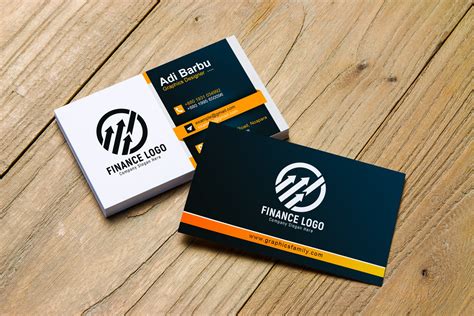Berikut adalah posting blog tentang resep lengkap untuk kartu nama keuangan:
The Complete Recipe for a Killer Finance Business Card
In today’s competitive business world, your business card is more than just a piece of paper; it’s a mini-billboard, a first impression, and a networking tool all rolled into one. For those in the finance industry, where trust and professionalism are paramount, your business card needs to be exceptionally well-crafted. This post will provide you with a complete recipe for creating a finance business card that commands attention and leaves a lasting, positive impression.
Key Ingredients for Success
Before diving into the design specifics, let's outline the essential ingredients for a high-impact finance business card:
1. High-Quality Materials:
- Stock: Opt for a thick, high-quality card stock (at least 300gsm) that conveys a sense of solidity and permanence. Avoid flimsy paper; it cheapens your brand.
- Finish: Consider a premium finish like linen, silk, or even embossed textures to add an element of sophistication and luxury. A matte finish offers a subtle elegance, while a gloss finish provides a sleek, modern look.
2. Clean and Professional Design:
- Minimalist Approach: Keep the design clean and uncluttered. Avoid overwhelming the card with too much text or graphics. Less is often more, especially in finance.
- Font Selection: Choose a professional and easily readable font. Serif fonts (like Times New Roman or Garamond) often project a traditional and trustworthy image, while sans-serif fonts (like Arial or Helvetica) offer a modern and clean look. Consistency is key; stick to one or two fonts maximum.
- Color Palette: Select a color palette that reflects your brand identity and the overall tone of your financial services. Classic combinations like navy blue and gold, or black and silver, project sophistication and trustworthiness.
3. Essential Information:
- Your Name: Use a clear and legible font size for your name, ensuring it's the most prominent element on the card.
- Your Title: Clearly state your position or title within the financial firm.
- Company Name & Logo: Include your company's name and logo for immediate brand recognition.
- Contact Information: This is crucial. Include your phone number, email address, and website (if applicable). Consider including a professional LinkedIn profile URL.
- Location (Optional): If relevant to your business, include your physical address or city and state.
4. Strategic Use of White Space:
- Breathing Room: Don't overcrowd the card. Strategically placed white space improves readability and creates a more polished appearance.
Design Considerations for Different Finance Niches
The specific design elements you choose will also depend on your niche within the finance industry. For example:
- Wealth Management: A more luxurious and sophisticated design might be appropriate, emphasizing trust and stability.
- Financial Planning: A clean and organized design, perhaps with a subtle use of color, may be preferable.
- Investment Banking: A modern and sleek design might be more suitable, reflecting innovation and dynamism.
The Finishing Touches
Once your design is finalized, ensure high-quality printing. A professional print shop can guarantee a crisp, clear result that reflects the quality of your services. Consider adding a protective coating to enhance durability and longevity.
Conclusion
Creating a compelling finance business card is an investment in your professional image. By carefully considering the elements outlined above and tailoring the design to your specific niche, you can create a business card that effectively represents your brand and helps you build lasting relationships with clients and colleagues. Remember, first impressions matter, and your business card is often the first impression you make. Make it count.
